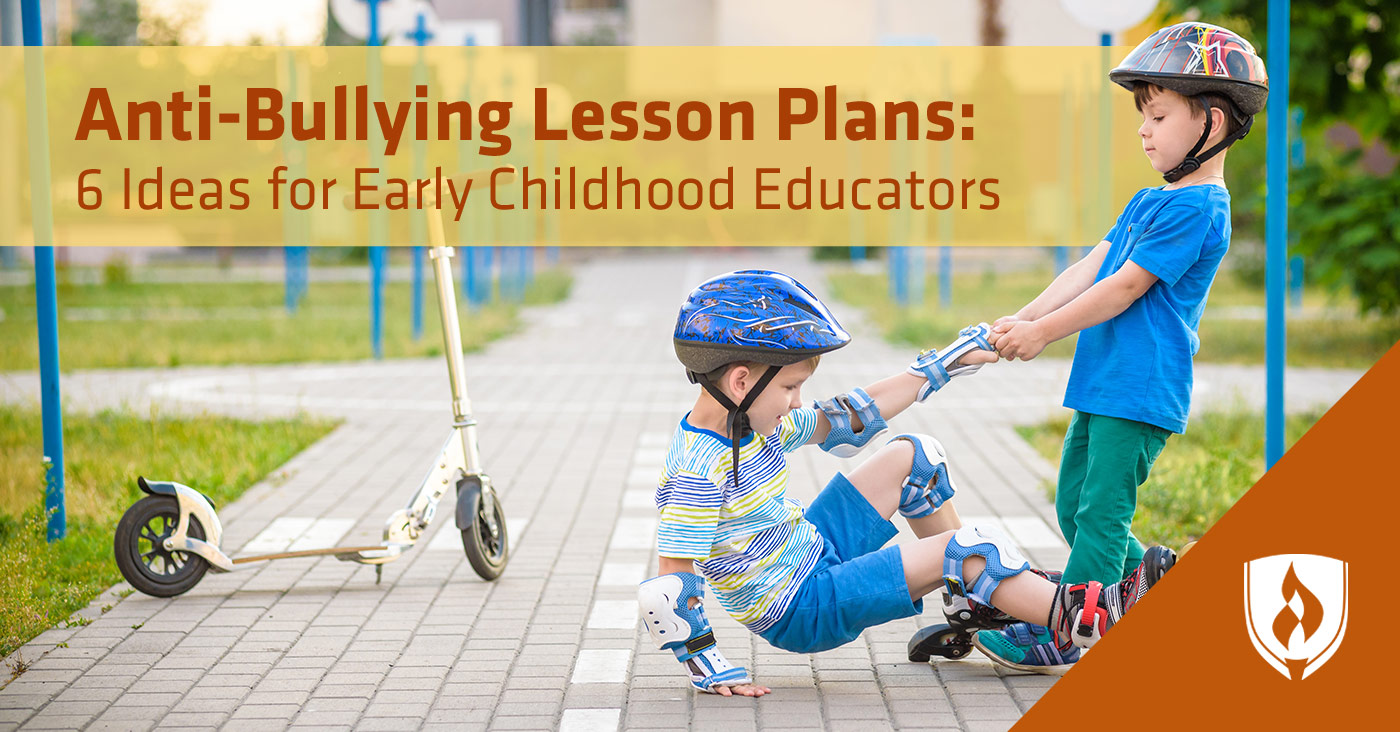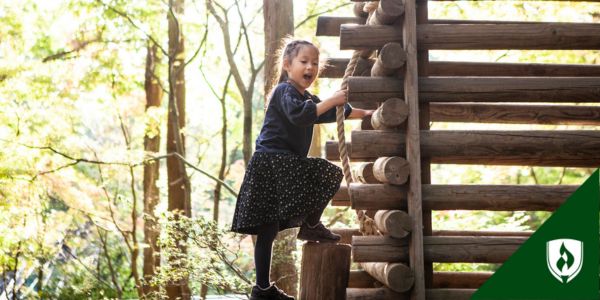
“Kids will be kids” is an old phrase you’re probably familiar with. Sometimes kids will be kids, making messes as they play and learn, or running and jumping as they exercise their growing muscles. When it comes to bullying, however, there’s no good reason to stick with our primitive defaults of creating in-groups at the expense of others.
Bullying is a big problem that extends beyond the stereotypical scene of the biggest kid on the block stealing everyone else’s lunch money. Today’s children could find themselves up against verbal bullying (teasing), emotional bullying and cyberbullying, in addition to physical violence.
Many teachers are adding “bullying prevention” to their list of responsibilities. Add these anti-bullying lesson plans to your early childhood class to share the importance of kindness and positive values with the little ones in your life.
The importance of bullying prevention in the early years
Preventing bullying in early childhood settings might sound impossible. Pushing, shouting and even biting can all be part of typical development in young children. However, there is a line between expected developmental behaviors and more deliberate bullying—and it’s one early childhood teachers must be vigilant to watch for.
More than 20 percent of children between the ages of two and five years old have experienced physical bullying, and more than 14 percent of kids in the same age range have been victims of emotional bullying, according to a study published by the American Academy of Pediatrics (AAP).1
Although the Centers for Disease Control and Prevention (CDC) defines bullying as occurring between “school-aged youth,” kids are never too young to begin learning how to control their aggressive impulses. Teachers and parents alike can use these ideas to teach their little ones the importance of kindness and empathy to stop bullying before it starts.
6 Anti-bullying lesson plans and strategies for early childhood settings
1. Model positive values
Actions speak louder than words, especially for young children. Kids learn how to handle tough situations by watching the important adults in their lives. Though not much is known about why bullying behaviors arise, experts believe a leading factor is the way kids are treated by their parents, according to Child Trends.2 A child’s internal sense of right and wrong is “heavily influenced by the values and rules that are held up and modeled by caregivers and parents,” says Elizabeth Malson, president of the Amslee Institute.
Modeling positive values and the ability to calmly resolve conflicts shows young kids how to handle problems without resorting to aggression or emotional bullying. Adults who show genuine care, active listening and empathy toward children will be paving the way for kids to develop those values for themselves.
2. Allow kids to practice conflict resolution
Stepping in to help toddlers who are fighting over a toy seems like the right thing to do. But mediating children’s conflicts for them can do more harm than good. Kids need plenty of practice in choosing non-bullying solutions to their problems, and sometimes that means adults need to stand back.
“Unless it is an urgent issue, caregivers, teachers and parents should wait before jumping in to help a child through a challenging situation,” Malson says. This doesn’t mean adults should abandon children to deal with everything on their own, though! Instead, Malson recommends observing from a short distance to see whether kids can find their own solution. Teachers can also take advantage of calm moments in the classroom to offer guidance so kids have the tools they need to navigate the conflicts that will inevitably arise.
3. Set boundaries
No classroom is too young to benefit from an anti-bullying policy. Young children are still learning which behaviors are okay and which are not. Malson shares that a classroom setting that’s too relaxed could “contribute to frequent rule breaking and a general apathy or lack of empathy for others, whereas clear rules and appropriate consequences can validate a child’s feelings without judgment.”
Expectations and rules around bullying should be clearly communicated to both children and parents. StopBullying.gov recommends that teachers and school administrators create a mission statement, policies that define and prohibit bullying and a system for children to report being mistreated.
4. Role-play to promote empathy
Empathy is an essential skill for children to develop. When kids are able to see things from another’s point of view, they become more accepting of differences and less likely to act unkindly toward their peers. Toddlers don’t have a lot of life experiences to rely on for understanding how others feel—so any opportunity to put them “in the shoes” of another can help build an early sense of empathy.
Set up role-play scenarios in which kids are asked to describe how they might feel in different situations or are encouraged to show kindness to a classmate. The Education Development Center offers several examples to help you bring empathy to your classroom through pretend play.
5. Read books with an anti-bullying message
Reading books with empowering messages is a simple way for teachers to bring anti-bullying lesson plans to life in the classroom. Picture books can teach kids about intangible values like empathy and kindness that can be tough for them to understand. They’ll also benefit from seeing the results of the good and bad choices characters make.
While there are a lot of great options out there, this selection of anti-bullying picture books will get you started:
- You, Me and Empathy by Jayneen Sanders
- The Recess Queen by Alexis O’Neill
- I Walk with Vanessa by Kerascoët
- The Juice Box Bully by Bob Sornson and Maria Dismondy
- Tease Monster by Julia Cook
6. Empower kids to stand up for themselves and others
Children who are empowered to stand up for themselves and others can stop bullying before it starts. Empowerment often starts with kids who feel safe and secure, who have high self-esteem and who can acknowledge their feelings in challenging situations.
ECE teachers can empower their young students by lending a listening ear when they have a problem, encouraging kids in their developing skills and “mirroring” a reflection of their intense emotions to validate their feelings. “It’s important to be supportive of a child’s attempts to cope with their feelings,” Malson says. “By providing caring guidance in problem solving, caregivers can help a child feel more positive about themselves and their ability to get their own needs met. And this can contribute to higher self-esteem.”
Anti-bullying lesson plans in early childhood and beyond
By making bullying prevention a priority in your ECE classroom, you’re helping raise a generation of empathetic and empowered kids who treat others with kindness.
1American Academy of Pediatrics, Violence, Abuse, and Crime Exposure in a National Sample of Children and Youth [accessed June 2019] https://www.unh.edu/ccrc/pdf/CV193.pdf




